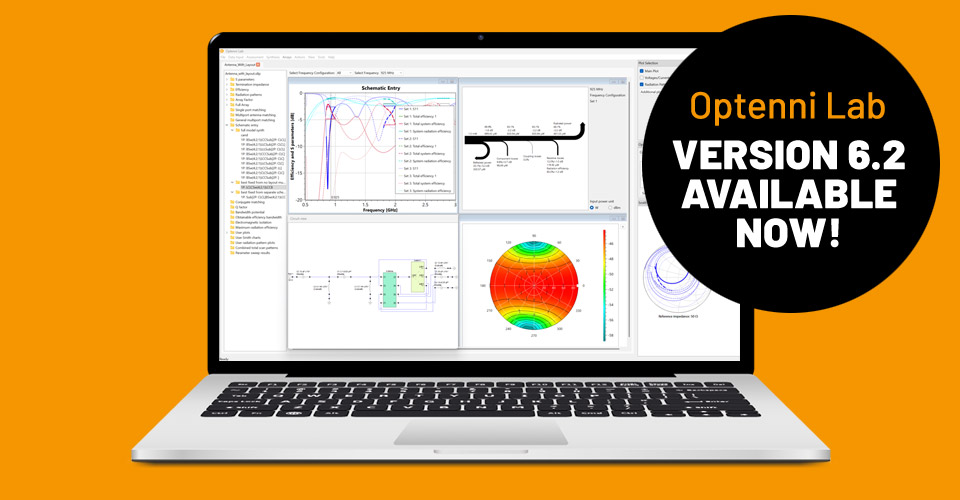Antenna Array Performance Optimization
Optenni Lab Array Module contains assessment and optimization tool especially for array designs where the antenna element isolation is not perfect. The mutual coupling causes many effects that reduce the array performance, most problematic being the active impedance that is strongly dependent upon beam scan angle.

Optenni Lab array module can quickly show the array performance using canonical solutions, such as progressive phase shifts and closed-form amplitude tapering.

The solution parameters of Optenni Lab’s canonical solutions for arrays can be tuned interactively while the beam parameters and active reflection coefficients are updated in real time.

Optenni Lab can quickly calculate the total scan pattern of the array, indicating the maximal possible array gain to any direction.
Optenni Lab makes no compromises in the modeling accuracy: the port coupling is modeled by full S-parameter matrix, and the normalized radiation patterns of each port are used while forming the beams and calculating the total system efficiencies. This means that the designer can evaluate the realized performance without any assumption on the isolation or symmetry of the array.
Moreover, Optenni Lab calculates the active impedances for any given excitation, and also optimizes both excitation and matching circuits such that the active impedance influence is minimized, while having a desired main lobe gain, side lobe level and radiation nulls. The effortless combination of circuit and radiation aspects of the array makes Optenni Lab a unique tool for integrated array-PA module designs, for example mobile or fixed mm-wave arrays for 5G.
The Optenni Lab Array Module has the following operation modes:
- Analysis and optimization of arrays using the array factor approach. Here only one element pattern is used, the coupling between the elements is ignored and perfect matching is assumed. The user specifies the array geometry and then Optenni Lab can make predictions about the array performance.
- Analysis and optimization of arrays using the full array approach. Here all the element radiation patterns are used and the full S parameter matrix of the array, including coupling and mismatch terms are taken into account. Here we are making no assumptions and the optimized results are accurate, provided that the radiation patterns and S parameters were simulated or measured in an accurate way.
- Combined analysis of the feeding circuit and array beamforming.In this mode, both the circuit-related aspects (matching, efficiency) and radiation pattern related aspects (beam shape, polarization) are taken into account and optimized simultaneously.
The Optenni Lab Array Module has the following functionalities:
- Calculation of the beamforming weights from closed-form canonical solutions. For example, Optenni Lab can apply a progressive phase shift across the array elements and apply common amplitude tapering schemes to reduce side lobe levels. Optenni Lab can also calculate the maximal available gain to any direction.
- Optimization of the beam shape, e.g. main beam direction, side lobes etc.
- Calculation of the total scan pattern provides a quick assessment of the array’s steering capability. It reveals blind spots of the array, and can calculate the cumulative distribution functions of the total scan pattern results.
The beam optimization has many possible optimization goals:
- Optimization of the main lobe and polarization
- Optimization of the 3 dB beam width of the main beam
- Minimization of side lobe levels
- Control of nulls to certain directions
- Minimization of the maximum gain over all directions
- Control of the active reflection coefficients of the array
- Maximization of system efficiency
- Maximization of the effective isotropic radiated power (EIRP) of the array
As a summary, the Optenni Lab Array Module can provide some quick insights into the obtainable performance of your array and then optimize the feeding vectors so that desired beam characteristics are obtained.


